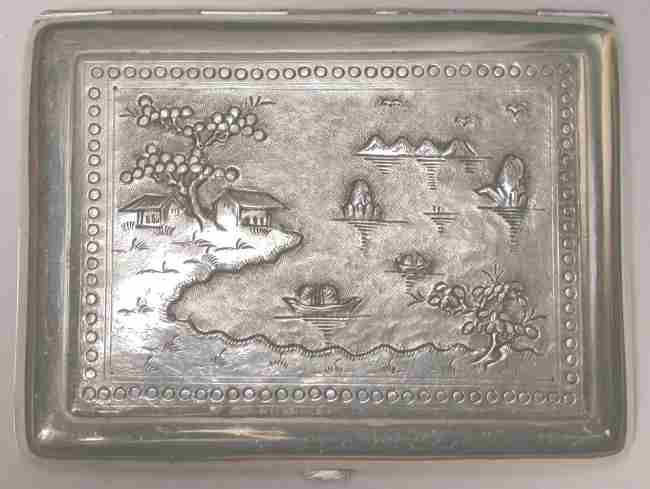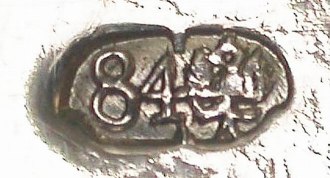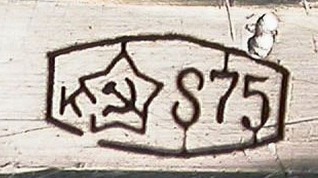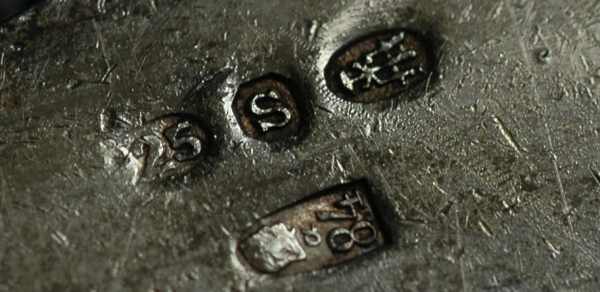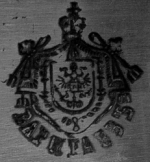by Fred
Sinfield
|
click on images to enlarge
TRUST A DEALER?
A dealer at a flea market had a 77gram calling card case
that was, according to him, made in Imperial Russia.
To support his claim he pointed out the stamp inside the case
lid and base being the 84 standard mark with the Russian Eagle.
What was intriguing is that stamp was unfamiliar but he assured
that the dating and his assessment were correct.
One fact ignored was there is another punch along the rim of
both pieces. This punch has a ‘K’, a star with a hammer and
sickle and a standard mark of 875. His explanation was that
although the piece was early 20th century it was re-assayed
later, which accounts for the stamp on the rim.
A conclusion might be that the undecorated case was assayed
in the USSR after 1958, possibly in Kiev, and the decorative
panel added later in the China by a silversmith who had an
Imperial Russian type punch.
Has other readers encountered this type of marking as the 84 and
eagle does not appear in any of the book consulted?
In spite of the apparent conflict of the punches and dating, the
price was right so it was purchased.
Fred Sinfield
I have some additions about uncommon Russian marks.
The first is a '84' Russian mark (possibly St.Petersburg,
1908-1926) accompanied by another mark (unknown to me) looking
as '925'.
Further oddity is that '84' zolotnicki corresponds to a silver
fineness of 875/1000, in contrast with the '925' mark indicating,
presumably, 925/1000 fineness.
The second is a Moscow 1908-1926 mark (female head
towards right) obliterated with " X " accompanied by maker's
mark in cyrillic letters (possibly KURNIKOV R) reflected as in a
mirror.
Apparently who used the mark ignored the cyrillic alphabet.
Giorgio Busetto
In the mark above the Cyrillic characters are wrong. They
look right in the mirrored image below
Fred Sinfield
- 2007 -
|
|
 ASSOCIATION OF SMALL COLLECTORS OF ANTIQUE SILVER
ASSOCIATION OF SMALL COLLECTORS OF ANTIQUE SILVER